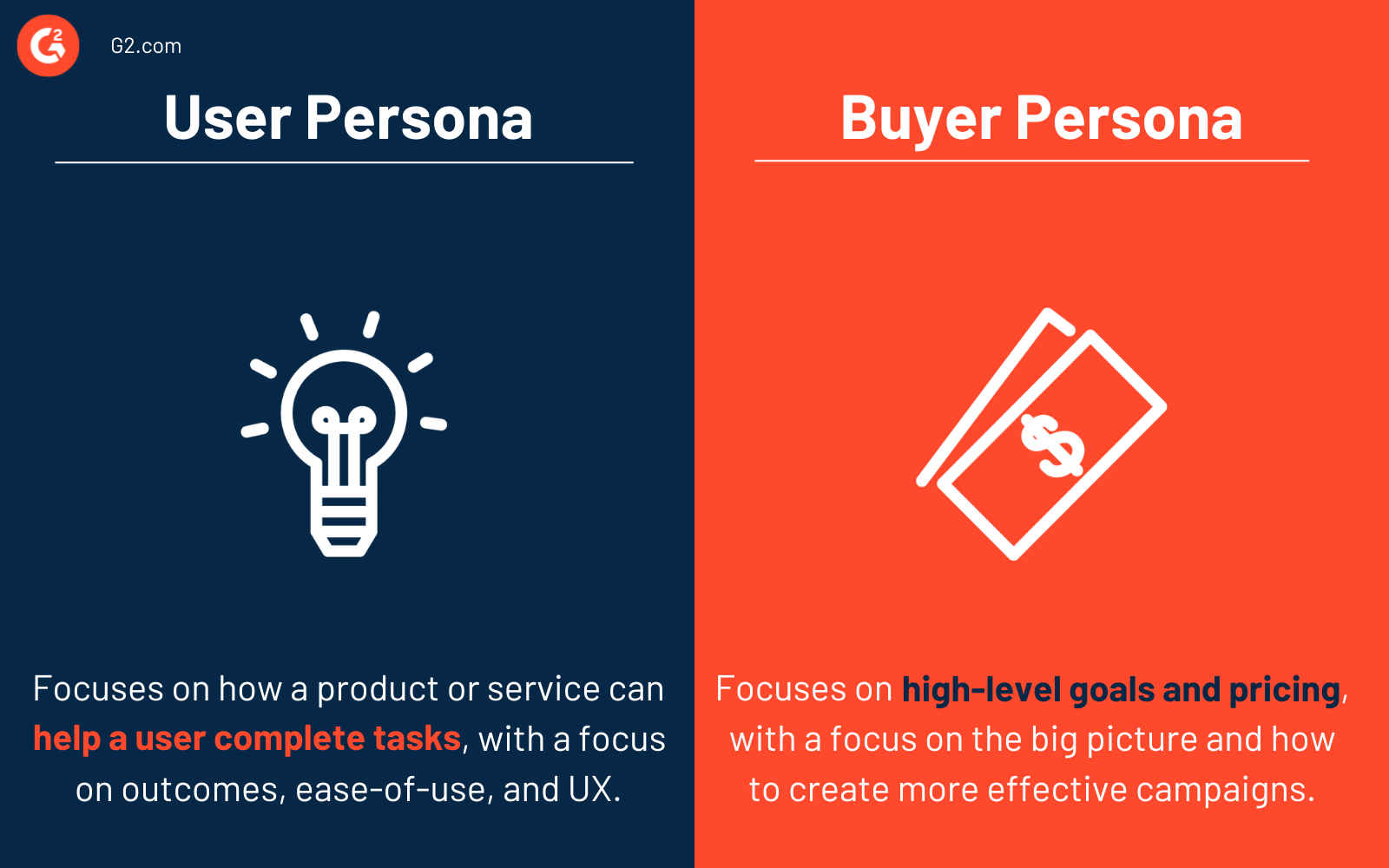What is a user persona?
User personas are profiles created to represent a target user audience. Although fictional, their traits and characteristics are based on real user behavior, goals, and problems.
These personas, sometimes referred to as UX personas, are used by both product development and marketing teams to build and promote products that are created for the desires of the target audience.
Data from real users is gathered through market research services providers to create individual personas for every type of key user the business anticipates within its target market. Tangible demographic information and behavioral or interest-based data are assessed to create accurate personas that reflect the type of user the business is trying to attract.
Types of user personas
With a focus on UX and usability, personas can be categorized into one of three groups. These are:
- Lightweight or proto personas. These personas are built using existing user data, without additional research being conducted. This data may come from product development research like workshops or prototype testing. Although beneficial, it’s important to remember that this data is often not based on real users, or a very small sample size, so it may not be an accurate reflection.
- Qualitative personas. Using exploratory research like interviews and surveys, qualitative user personas can be built with real user data. While this is more time-consuming than lightweight personas, the results can have a significant impact on product development and, ultimately, the success of the product once launched.
- Statistical or mixed personas. Both qualitative and quantitative data inform these types of personas. Since these require extensive data to pull from, this persona is typically reserved for large organizations that have the resources to support their development.
Basic elements of user personas
Much like buyer personas, user personas are unique profiles of a typical user in their audience segment. Some personas may include similar demographic details, while others may focus more on the user’s role within their segment, like what they do within a company. Information that’s commonly included is:
- Occupation. Users have clear needs when it comes to their interaction with a product. Particularly in business settings, knowing what a user’s role is in the organization and how they intend to use the product to support their work is vital.
- Goals. Similarly, every user will have a goal for how they want a product or service to help them in their day-to-day life. Understanding this allows for user experience (UX) changes as needed and the promotion of specific features.
- Problems. Like buyers, a user will have problems that they want a product or service to resolve for them. This can be thought of as the barrier to their goal. Even if the user isn’t the same person as the buyer, their problem and the solution for overcoming this can heavily inform the decision made by the buyer.
Benefits of user personas
Understanding how people use a product or service is one of the best ways to ensure success post-launch. Personas allow UX and marketing teams to:
- Learn what real users want. Product teams can often be too close to the source to see what their target audience needs from a product to make it functional. Personas use real data to help teams develop the most effective product for the user base.
- Identify usage patterns for specific features. With a large research sample size to develop new personas, patterns can easily be identified. This means that new features can be developed based on how real users are behaving, while other features may need adjustments if usage data shows that they’re not working as expected.
- Refocus research and development. It’s easy to get lost in day-to-day work as a UX product developer. With user personas, attention is shifted away from simply building out the product, instead focusing on what areas of the product are going to be most useful for users and how the product makes their lives easier.
Best practices for user personas
No persona should remain static for the lifetime of a product. Research should continually be updated as new users come on board and the line of products and services within the business develops. A few best practices should be followed to make this process simpler, such as:
- Building an ongoing customer research strategy. Businesses should always be trying to gather as much data as possible about their users. Surveys, questionnaires, and one-on-one interviews are good ways to learn how customers use products and what can be done to make them better.
- Organize data by problem or goal. Rather than looking at data on a per-product level, sorting information by what a user is hoping to achieve can lead to interesting developmental ideas for several products.
- Remain open-minded. All businesses and, as a result, their research will come with biases. Users must aim to create research methodologies that eliminate as many of these as possible to ensure these biases don’t significantly influence product development.
User persona vs. buyer persona
While there are similarities between user personas and buyer personas, it’s crucial to understand the key differences.

Not every user will be a buyer and vice versa, although they can be in some instances. This is especially the case in business-to-business (B2B) settings, where a buyer may be an owner or stakeholder, but the user is an employee.
User personas will typically focus more on how a product or service can help them complete their tasks better, with a focus on outcomes, ease of use, and UX. Buyer personas are often more focused on high-level goals and pricing, with a focus on the big picture.
Learn more about how customers are using your products and services with enterprise feedback management software.

Holly Landis
Holly Landis is a freelance writer for G2. She also specializes in being a digital marketing consultant, focusing in on-page SEO, copy, and content writing. She works with SMEs and creative businesses that want to be more intentional with their digital strategies and grow organically on channels they own. As a Brit now living in the USA, you'll usually find her drinking copious amounts of tea in her cherished Anne Boleyn mug while watching endless reruns of Parks and Rec.


















